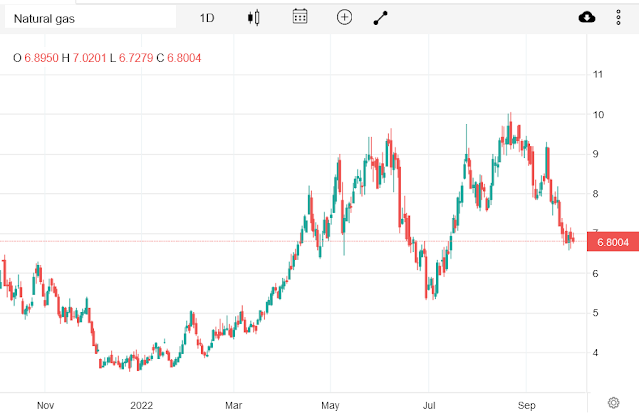The past weeks in review:
The FED raised rates by 0.75 %. No surprise. But the speech was very hawkish and the markets are expecting rates to continue rising until something breaks in the economy or the financial markets. Other central banks have the same stance: attacking high inflation with higher interest rates. The stock market tumbled until reaching the June 2022 lows.
In the UK, a massive tax reduction was announced (without reducing government spending reduction, which will cause deficit increase), causing confusion in the markets. The GBP tumbled. The bank of England had to announce a gilt market operation, during for at least a few weeks. Will they return to quantitative tightening or not? Will the FED also pivot?
In europe, the energy crisis continues, after the sabotage of Nordstream 1 pipeline. Natural gas supply will not be re-established anytime soon.
In Ukraine, the results of the voting for the anexation of the eastern territories to Russia will allow Putin to take over the region and defend it by whatever means necessary... While this happens, NATO demonstrates the power of HIMAR weapons in Latvia.
The fortnight ends with with major stock market indices at new lows - possibly not the bottoms...
The Markets and the Economy
Video: Fed Going Bigger and Bolder, Here’s What You Should Own: Chris Versace
Video: Get ready for a hard landing as rates keep rising to contain inflation
Channel: Small Caps
The UK Uncertainty
Video: This is a 'historic' moment for the UK's economy, says Mohamed El-Erian
Channel: CNBC Television
The Situation in Ukraine, and NATO vs Russia
Video: Putin issues DIRE warning to the WEF globalists and it's game time | Redacted with Clayton Morris
Channel: Redacted
Video: NATO demonstrates HIMARS rocket system in Latvia in a display of force
Channel: euronews
Will the Central Banks Blink or not Blink?
Video: Bank of England Pivots First, Fed to Follow - Ep 844
US stocks fell in volatile trading Friday, with the Dow losing more than 500 points, the S&P 500 and Nasdaq lost 1.5% each, as investors digested a slew of economic releases. The Fed's preferred inflation measure, the US core PCE price index, came well above expectations in August, worrying investors that inflation may be stickier than anticipated. On top of that, a report from the US Commerce Department showed that personal spending rebounded in August, pointing to a still resilient economy. Markets rallied early in the session as Fed Vice Chair Lael Brainard acknowledged the need to monitor the impact rising borrowing costs could have on global market stability. All three benchmarks are now on track for sharp weekly and monthly declines, with the Nasdaq losing the most in September, nearly 12%. All indices are headed for three straight quarters of decline for the S&P for the first time since 2009 and for the Nasdaq since the dot-com bubble.
Crypto














Comments
Post a Comment